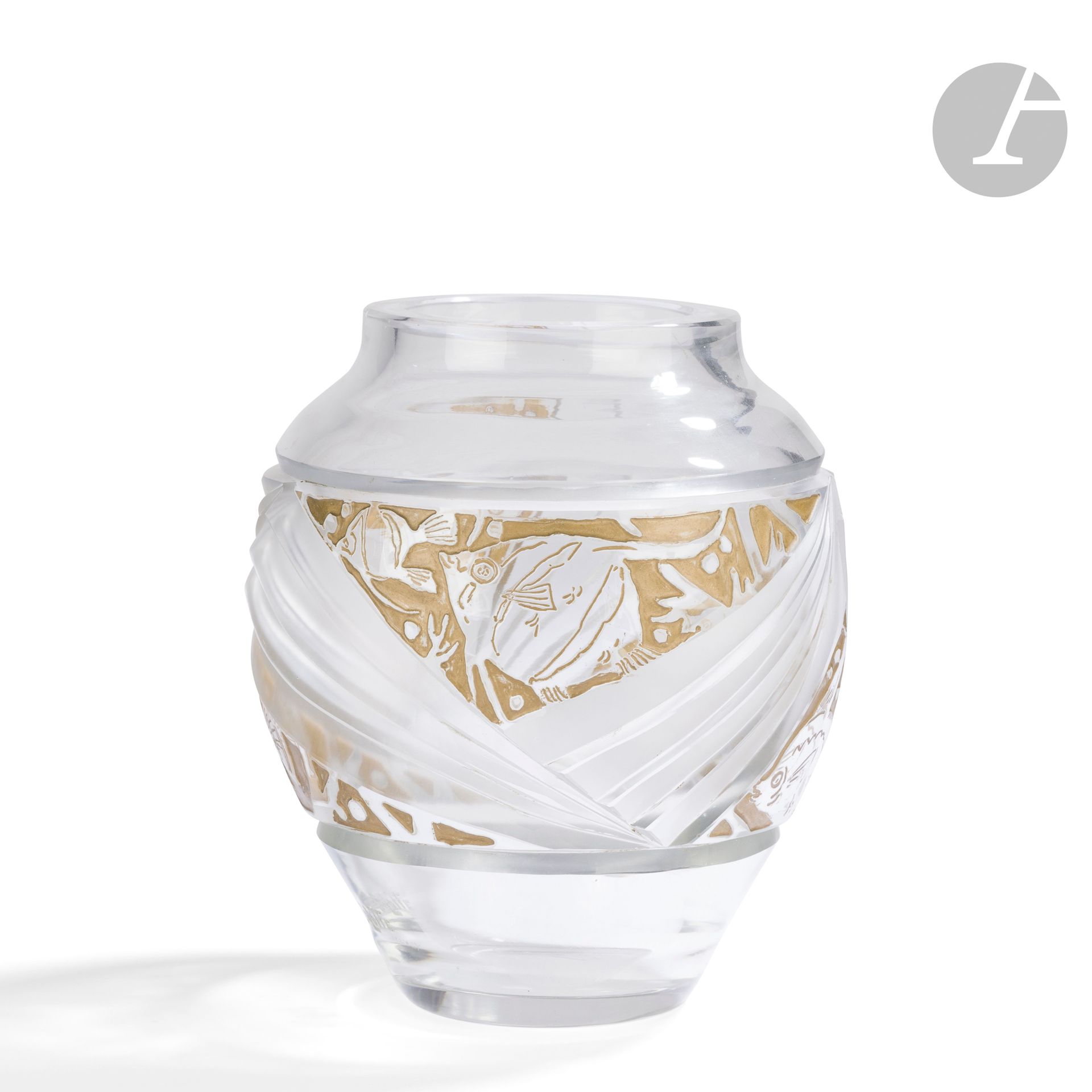Description
ARISTIDE COLOTTE (1885-1955) Les Poissons, circa 1926 Obovoid vase with wide annular neck. Blown-molded white glass proof. The title decoration is acid-etched in reserves and enhanced with gold; the geometric motifs are wheel-cut. Signed and located COLOTTE Nancy towards the base. H.18cm Bibliography: Mireille Mazet - A. Colotte, sculpteur sur verre, sur cristal - Les Éditions de l'Amateur, Paris, 1994. Identical model with black patina reproduced on page 143 (ill. 34).
111
ARISTIDE COLOTTE (1885-1955) Les Poissons, circa 1926 Obovoid vase with wide annular neck. Blown-molded white glass proof. The title decoration is acid-etched in reserves and enhanced with gold; the geometric motifs are wheel-cut. Signed and located COLOTTE Nancy towards the base. H.18cm Bibliography: Mireille Mazet - A. Colotte, sculpteur sur verre, sur cristal - Les Éditions de l'Amateur, Paris, 1994. Identical model with black patina reproduced on page 143 (ill. 34).
You may also like
